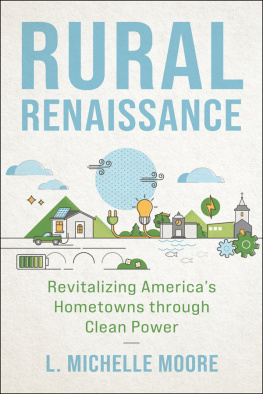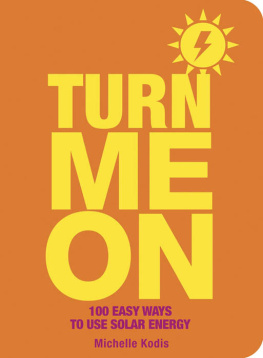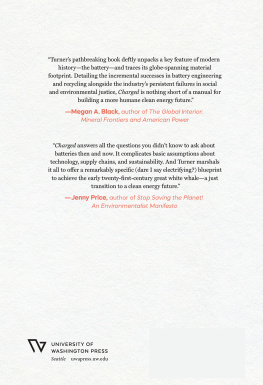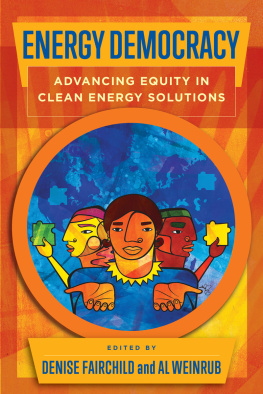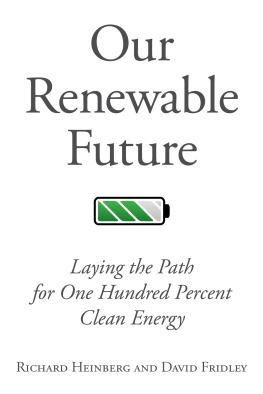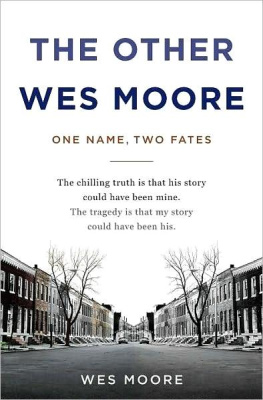About Island Press
Since 1984, the nonprofit organization Island Press has been stimulating, shaping, and communicating ideas that are essential for solving environmental problems worldwide. With more than 1,000 titles in print and some 30 new releases each year, we are the nations leading publisher on environmental issues. We identify innovative thinkers and emerging trends in the environmental field. We work with world-renowned experts and authors to develop cross-disciplinary solutions to environmental challenges.
Island Press designs and executes educational campaigns, in conjunction with our authors, to communicate their critical messages in print, in person, and online using the latest technologies, innovative programs, and the media. Our goal is to reach targeted audiencesscientists, policy makers, environmental advocates, urban planners, the media, and concerned citizenswith information that can be used to create the framework for long-term ecological health and human well-being.
Island Press gratefully acknowledges major support from The Bobolink Foundation, Caldera Foundation, The Curtis and Edith Munson Foundation, The Forrest C. and Frances H. Lattner Foundation, The JPB Foundation, The Kresge Foundation, The Summit Charitable Foundation, Inc., and many other generous organizations and individuals.
The opinions expressed in this book are those of the author(s) and do not necessarily reflect the views of our supporters.

Island Presss mission is to provide the best ideas and information to those seeking to understand and protect the environment and create solutions to its complex problems. Click here to get our newsletter for the latest news on authors, events, and free book giveaways.
2022 by L. Michelle Moore
All rights reserved under International and Pan-American Copyright Conventions. No part of this book may be reproduced in any form or by any means without permission in writing from the publisher: Island Press, 2000 M Street, NW, Suite 480-B, Washington, DC 20036-3319.
Library of Congress Control Number: 2021950888
All Island Press books are printed on environmentally responsible materials.
Manufactured in the United States of America
10 9 8 7 6 5 4 3 2 1
Keywords: agrivoltaics, broadband, clean power, cooperatives, Department of Energy, electric grid, electric vehicles (EVs), energy democracy, energy efficiency, energy financing, energy justice, energy policy, energy storage, microgrid, the New Deal, public power utilities, resilience, rural America, rural electric cooperatives, Rural Electrification Administration (REA), smart grid, solar panels, solar power, US Department of Agriculture (USDA), utilities, wind power
ISBN-13: 978-1-64283-197-9 (electronic)
To Curtis Wynn, my dear friend, respected mentor, and visionary rural cooperative leader.
As CEO of Roanoke Electric Cooperative, Curtis built the utility of the future in Eastern North Carolina. The rural community he served has energy efficiency to save on the bills, community solar, energy storage, a restorative program that sites solar on Black-family-owned farms, electric vehicles, vehicle-to-grid charging, and, increasingly, affordable broadband.
Curtiss influence extends beyond North Carolina. He is a national leader with four decades in the rural cooperative community, which includes serving as the National Rural Electric Cooperative Associations elected board president. His ability to pair gentle encouragement with a bold challenge led the NRECA to take the biggest step forward in governance that it has taken since its foundingadopting a national diversity, equity, and inclusion policy resolution in March 2021. Curtis now serves as CEO of SECO Energy, a two-hundred-thousand-member electric cooperative utility in Central Florida that is among the ten largest cooperative utilities in the country.
With gratitude, Rural Renaissance is dedicated to Curtis.
Prologue
I grew up in a small town in rural Georgia that I could not wait to escape. My worst nightmare was to end up back there, working for a textile millbut thats exactly what happened, putting me on a path that shaped the rest of my life in ways I could never have imagined. From LaGrange, Georgia, to the White House and back again, and around the world in between, going home and falling back in love with the little town where I grew up has shown me how we can make every hometown in America a place where people can thrive. The urbanization of America (and the globalization of the world) doesnt represent the one true path to economic prosperity and a sustainable way of life. We can live small and live well too. And we can do it together.
Rural Renaissance is a story about power and empowerment. Theres a moral to the story, and there are heroes in it, too, including an unlikely few who never envisioned the far-reaching good they would do. Most important, theres a happy ending, but only if we choose to pursue it.
Its also a story about energythe lifeblood of opportunity and economic development and a pillar of human civilization in this twenty-first-century world. Turning on the lights in 1930s rural America welcomed even the farthest-flung communities into the industrial ageand created an economic engine that attracted jobs and supported a quality of life previously unimaginable. In the age of information and the Anthropocene period, the challenges are different. Our old energy choices are destroying the places we love, and the places many of us come from are fading away. But we can be better.
Let me share a different vision, one thats possible thanks to some prescient decisions from our past: a future in which rural communities are flourishing. In this future, energyclean, resilient, and localand the infrastructure investment it takes to build it are sustaining good jobs in small towns, using the land rural America has in abundance to feed big-city energy appetites. Farming families are using unplanted fields for the last crop, earning a living from the power thats freely and abundantly available in the form of solar energy, thereby preserving generational wealth. And communities are becoming more resilient, connecting local renewables with energy storage to help improve energy futures for everyone.
Built and financed alongside the modern and secure power grid that needs it to function, broadband runs to every home, and the network is owned and governed by the communities it serves through rural and small-town public power utilities. These new high-speed networks also abound with educational options for kids who can barely get a dial-up connection and a dog-eared textbook today. Everyone has remote access to doctors, and no one has to drive hours for basic health care. Local businesses and start-ups can succeed because theyre finally connected to a global marketplace of people and companies that want to buy what they have to sell.
Rural and small-town utilities, the economic hearts of their hometowns, are flourishing because clean energy and the electrification of the transportation sector are enabling them to grow again. More revenue means more funding to support community development and pay for essential services, so residents are thriving, too, because their utilitiesrepresent their needs and are governed in alignment with their democratic roots.
As a result, and perhaps most important, the 48 percent of Americans whose hearts are in the country and who want to live in a small town can have a good life there with the dignity of good jobs, affordable homes, and the hope of an even better life for their kids.

